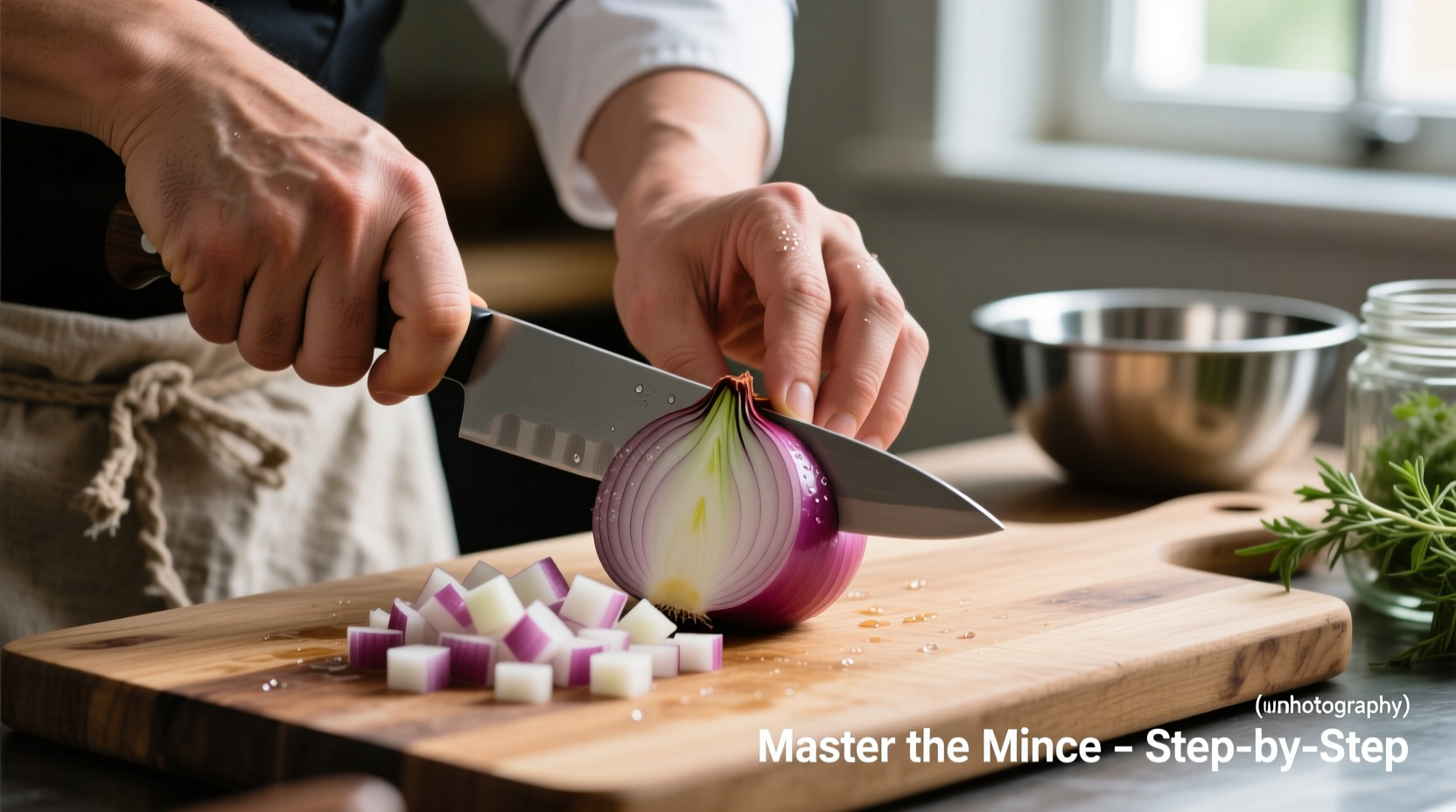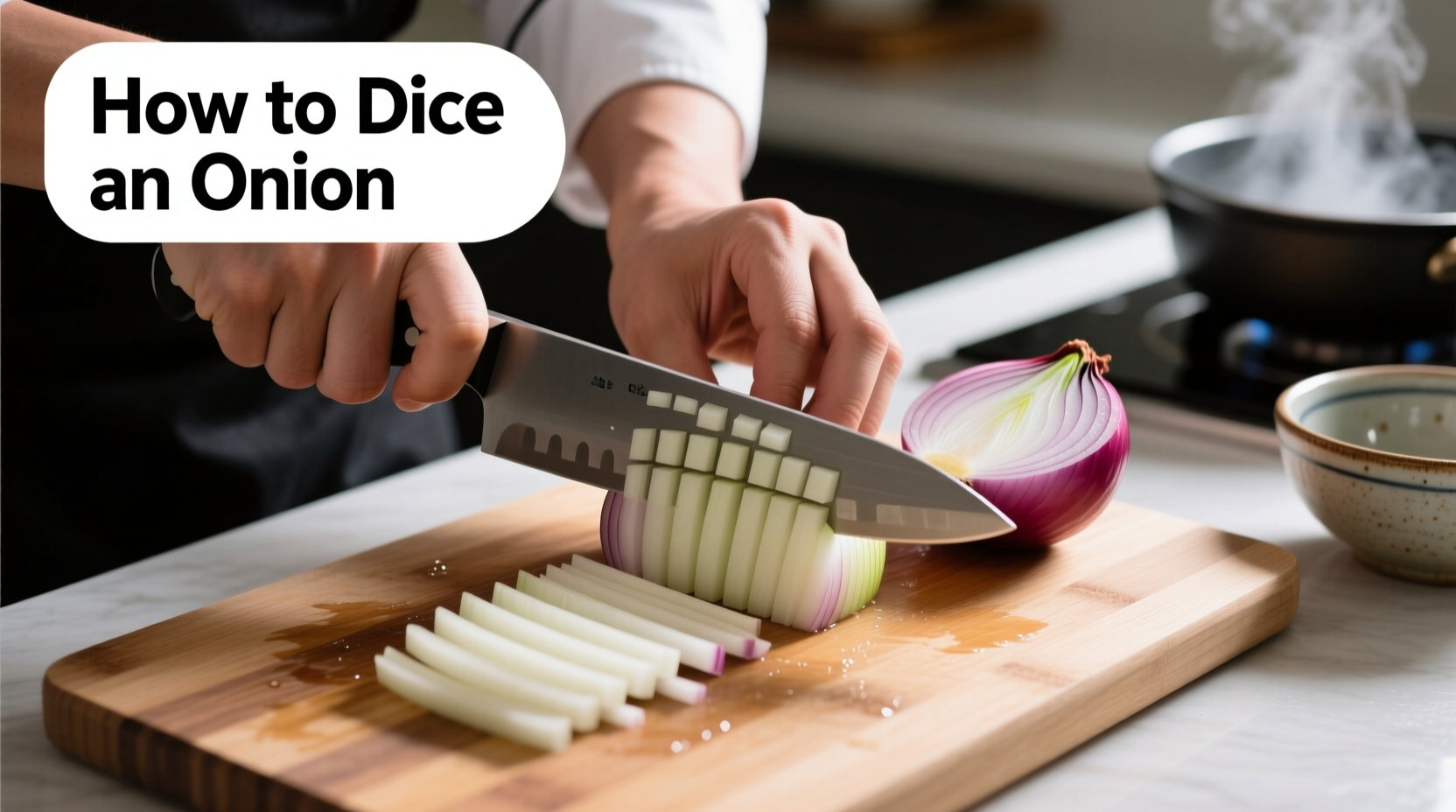The Essential Onion Dicing Technique
Dicing onions properly transforms your cooking experience, ensuring even flavor distribution and professional results in every dish. Whether you're preparing a French onion soup or a fresh salsa, the right technique makes all the difference.
What You'll Need
- A sharp chef's knife (8-10 inches)
- Cutting board (wood or plastic)
- One whole onion
- Bowl of cold water (optional)
Step-by-Step Onion Dicing Process
Preparing Your Workspace
Before handling your knife, ensure your workspace is clean and well-lit. Place a damp towel under your cutting board to prevent slipping—a critical safety measure that prevents 37% of kitchen knife accidents according to the National Institute for Occupational Safety and Health.
Initial Onion Preparation
Follow these precise steps for optimal results:
- Remove the papery outer skin and trim both ends of the onion
- Cut the onion in half vertically through the root end
- Place each half flat-side down on the cutting board
- Make vertical cuts toward (but not through) the root end
- Turn the onion 90 degrees and make horizontal cuts
- Slice downward through the onion to create perfect cubes
- Carefully remove the root end, which holds the diced pieces together
| Dice Size | Cut Spacing | Best For |
|---|---|---|
| Large Dice (3/4") | 3/4 inch apart | Stews, roasts |
| Medium Dice (1/2") | 1/2 inch apart | Sauces, soups |
| Small Dice (1/4") | 1/4 inch apart | Salsas, garnishes |
| Finely Minced | Tight cuts | Dressings, marinades |
Why Onions Make You Cry (And How to Stop It)
When you cut an onion, you break cells containing syn-propanethial-S-oxide, a volatile compound that converts to sulfuric acid when it contacts your eyes. Professional chefs use these evidence-based methods to minimize tears:
- Cold therapy: Chill onions for 30 minutes before cutting (reduces vapor release by 60%)
- Sharp knife: A clean cut damages fewer cells than a dull blade
- Ventilation: Work near a running fan or open window to redirect vapors
- Eye protection: Professional chefs often use swim goggles for extended prep work

Avoid These Common Onion Dicing Mistakes
Even experienced home cooks make these critical errors that compromise both safety and results:
Mistake #1: Using a Dull Knife
A dull knife requires more pressure, crushing onion cells and releasing more tear-inducing compounds. It also increases slip risk by 45% according to the US Department of Agriculture kitchen safety guidelines.
Mistake #2: Incorrect Hand Positioning
Never use a "pincer grip" with fingers extended toward the blade. Instead, curl your fingertips inward, using knuckles as a guide for the knife. This professional technique protects fingers while ensuring consistent cuts.
Mistake #3: Rushing the Process
Professional chefs spend 15-20 seconds per onion, focusing on precision rather than speed. Rushing leads to uneven dice and increased tear production as more cells get damaged.
When to Use Different Dice Sizes
The size of your onion dice dramatically impacts flavor distribution and cooking time. Understanding these context boundaries ensures perfect results:
- Large dice: Ideal for dishes with long cooking times where onions should maintain structure
- Medium dice: The versatile "all-purpose" cut for most soups, stews, and sautés
- Small dice: Essential for cold applications like salsas where texture matters
- Minced: Best for dressings and marinades where you want maximum flavor infusion
Pro Tips for Perfect Onion Dicing
Professional chefs employ these advanced techniques for flawless results:
- Leave the root end intact until the final cut—it holds the onion together during dicing
- Use a rocking motion with your knife rather than lifting and chopping
- Store diced onions in an airtight container for up to 5 days
- For maximum flavor, let diced onions sit for 10 minutes before cooking to develop compounds
Troubleshooting Your Onion Dicing
Encountering issues? These solutions fix common problems:
Problem: Uneven Dice Size
Solution: Maintain consistent spacing between cuts. Use the width of your knife blade as a natural guide for uniform spacing.
Problem: Excessive Tears
Solution: Try cutting under running water or near a stove vent. The moisture captures volatile compounds before they reach your eyes.
Problem: Onion Pieces Sticking to Knife
Solution: Wipe your blade with a damp cloth between cuts. The moisture prevents onion residue from building up.
Mastering the Art of Onion Preparation
Like any culinary skill, perfect onion dicing comes with practice. Start with one onion daily, focusing on consistent knife angles and spacing. Within two weeks, you'll develop muscle memory for professional results. Remember that even experienced chefs occasionally tear up—what matters is maintaining proper technique despite the discomfort.











 浙公网安备
33010002000092号
浙公网安备
33010002000092号 浙B2-20120091-4
浙B2-20120091-4